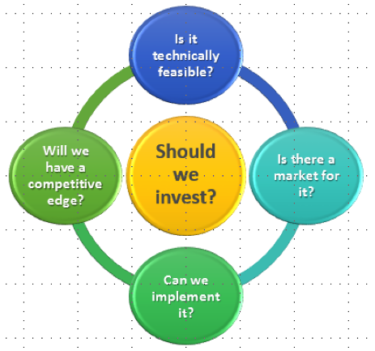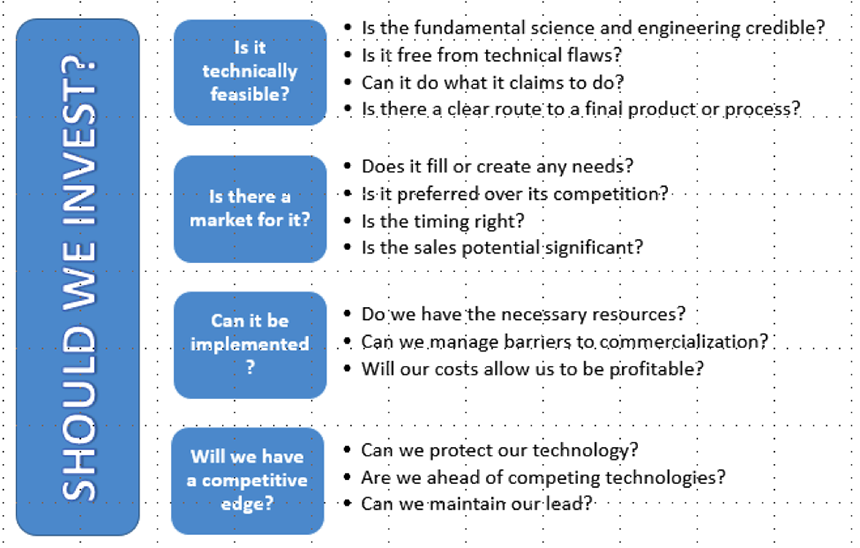From Lab to Market… Some Best Practices Along the Way
From Lab to Market…Some Best Practices Along the Way
In a “From the President” column in MIT’s Technology Review, President Rafael Rife addressed a problem that seems endlessly in search of a solution: how to keep new ideas based on new science from “getting stuck in the lab.” 1. For those who have grappled with this issue, whether in start-ups or in large established corporations, it is perhaps comforting to know that an august institution such as MIT is still seeking solutions to the same problem. One of the approaches proposed by Dr. Reif recognizes that there are “best practices” with respect to the technical refinement and iteration essential to commercial success and that mastery of such best practices could help speed-to-market. This post is the first of a series of posts focused on practices that enable successful management of issues at the technology/business interface. We start with technology assessment.
Technology Assessment – a Bedrock Best Practice
Are you now launching (or killing) an R&D project? Are you evaluating (or worried about) competing technologies? Are you making decisions about the impact of technologies that haven’t been developed and/or markets that don’t exist yet? If so, then you’re engaged in technology assessment. What may seem like a “gut feel” decision to invest (or not) in a new technology can be translated into a set of rational considerations, amenable to fact-finding and analysis. Technology assessment is more than a process – it involves specific inputs as well as an analytical framework to transform those inputs into insightful outputs. Done right, a technology assessment identifies sources of technical and commercial risk, prompting development of risk mitigation strategies and tactics.
There are four fundamental attributes of business-critical technologies that determine whether or not a given technology is worthy of investment. These are:

- technical feasibility,
- implementability,
- marketability, and
- competitive edge
At the core of a best-practice technology assessment is asking and answering the basic four questions related to these business-critical attributes, shown in Figure 1.
Our technology assessment approach employs a set of specific questions designed to support the answer to the high level question “Should We Invest”? Inputs to the assessment are both quantitative as well as qualitative. The questions and analytical framework for a complete technology assessment are shown in Figure 2.

After you’ve carried out a technology assessment as per the framework in Figure 2, how can you be confident in your results are right? Or, at least, how can you maximize the quality of the input and of the process itself, so that the quality of the outcome is high?

An approach we’ve found successful is to treat the outcome as a hypothesis. For example, your assessment results might be something like this: “Yes, this technology is feasible. We have the technical and financial resources for timely delivery of the first generation product, which offers unique and value-added functionality to our identified, target customers. Given known existing and expected competition, we expect to sustain our technical and market advantage for at least five years, so that the financial returns meet our target levels.” Now “proof test” your outcome by treating it as a hypothesis. Try to explode it by creating scenarios that would invalidate as many aspects of the hypothesis as possible. Include scenarios that may seem extreme or implausible just to test how robust the outcome is. Technical and market situations, especially those influenced by outside drivers such as regulatory issues and geopolitical dynamics, could drive the business outcome either higher or lower, perhaps with little lead time compared to the time necessary to respond. Consider the example of chlorofluorocarbons (CFCs) and their virtual elimination. Given their once-pervasive presence in a wide array of industries and markets, along with the vast CFC-based infrastructure among suppliers and users, the transition from CFCs to alternatives was astonishingly rapid. What is the “CFC” analog in your industry, either as a product that’s displaced or a product that does the displacing? Such extremes provide opportunities for new commercially useful technologies while threatening others with extinction.
In this post, we have introduced an analytical framework for technology assessment, specifically designed to answer the question “Should You Invest?” The framework enables transformation of an often highly subjective decision process into a set of objective considerations, amenable to fact-finding and analysis. In our next post, we’ll share additional best practices related to implementing a full technology assessment. In particular, we’ll offer suggestions to improve the practical usefulness of and increase confidence in the outcome of business-critical technology assessments.
- From Lab to Market… Some Best Practices Along the Way - October 19, 2016
References
| ↑1 | Reif, L. Rafael (September/October 2015). “From the President: Priming the Innovation Pipeline”. MIT Technology Review. P. 7. |
